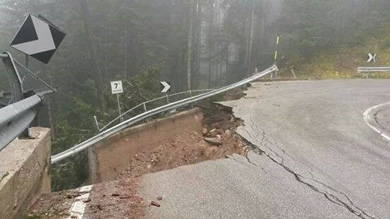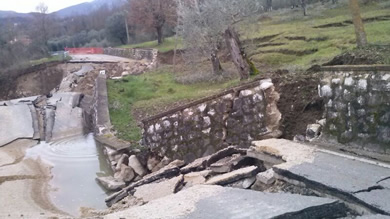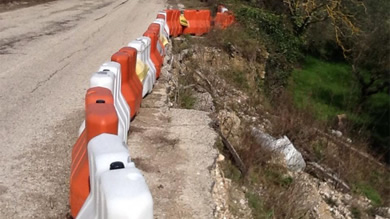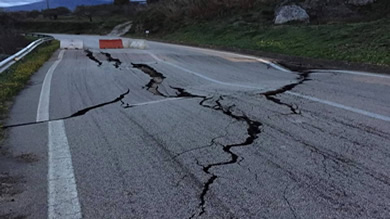
HYDROGEOLOGICAL DISSES
The hydrogeological instability is the set of morphological processes that have a strongly destructive action in terms of soil degradation and therefore indirectly towards the artifacts. It includes all those processes, starting from superficial and under surface erosion, up to the most catastrophic events such as landslides and floods. According to the analysis made by David J. Varnes in a 1984 report by UNESCO, the total risk related to hydrogeological instability can be expressed by the relation:
R t = (E) ⋅ (RS) = (E) ⋅ (H ⋅ V ) Rt: Total risk, E: Elements at risk, RS: Specific risk H: Natural hazard, V: Vulnerability
Weather conditions and climatic variations are only a marginal cause of hydrogeological instability.
The origins of the phenomenon are in fact of anthropogenic nature. Among the first is the excessive consumption of land, together with practices such as cement and the consequent deforestation.
The actions that can be implemented in relation to this risk are fundamentally the prediction, prevention and mitigation of the effects.
Our services begin with the appropriate geotechnical studies on the basis of specifically planned geological investigations to then come up with proposals for prevention and mitigation through Naturalistic Engineering techniques or by exploiting the structural component that the flora can guarantee by supporting consolidated Engineering techniques to low environmental impact such as, for example, earthen and piles of chestnut wood and so on.
If the intervention should be of settlement after failure, the best restoration methodology is always studied with priority given to environmental impact, with interventions designed to mitigate the effects of a further failure and, when possible, cancel the possibility of repeatability of the failure.
The service is completed with specific monitoring and maintenance plans as above all the maintenance aspect, planned and executed with care and rigour, is the first and most effective preventive action.





